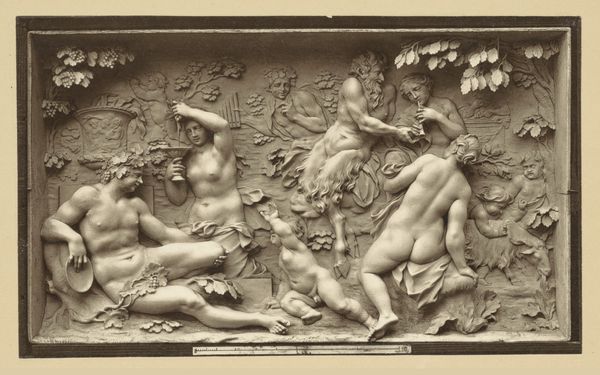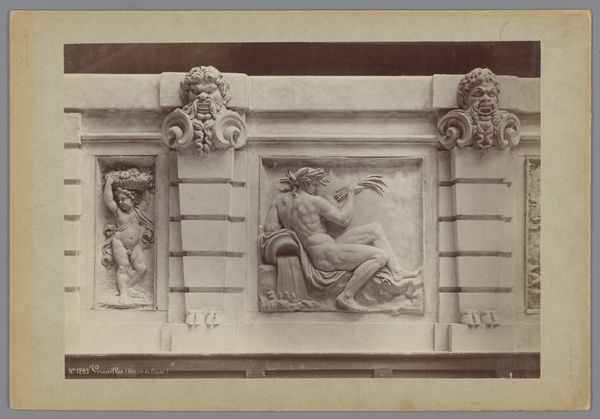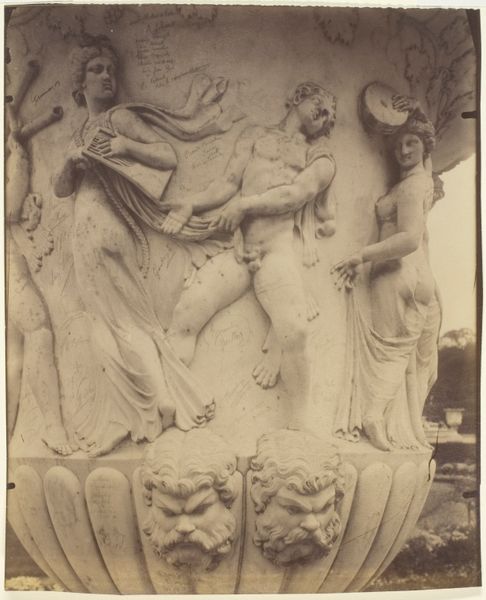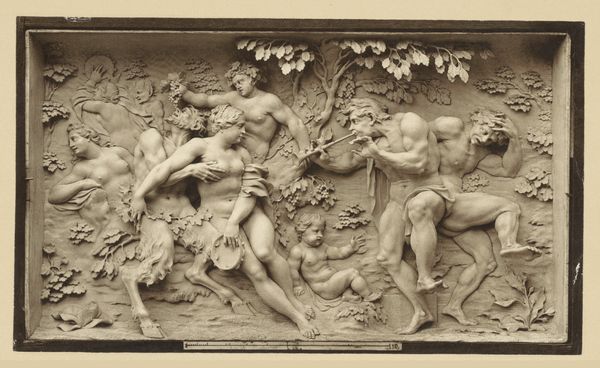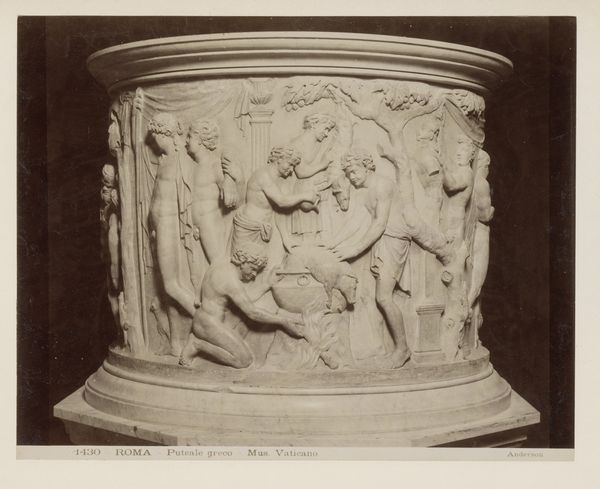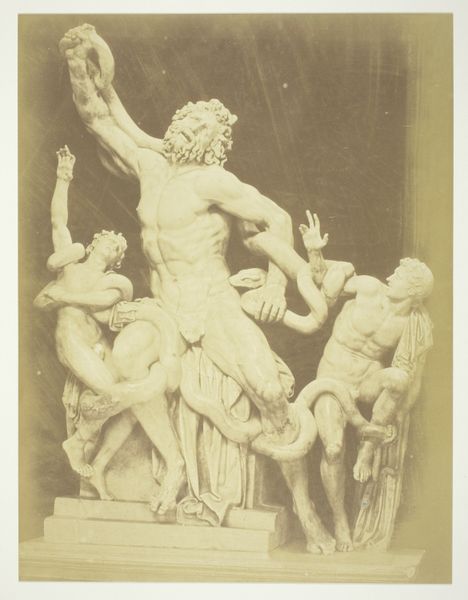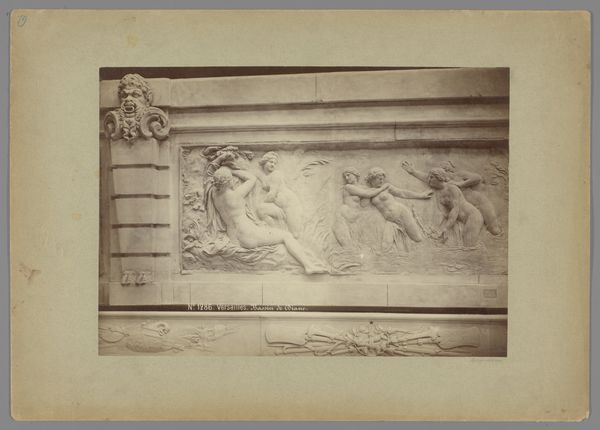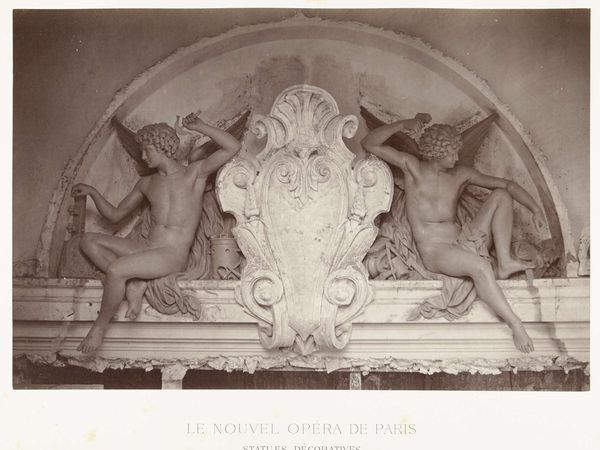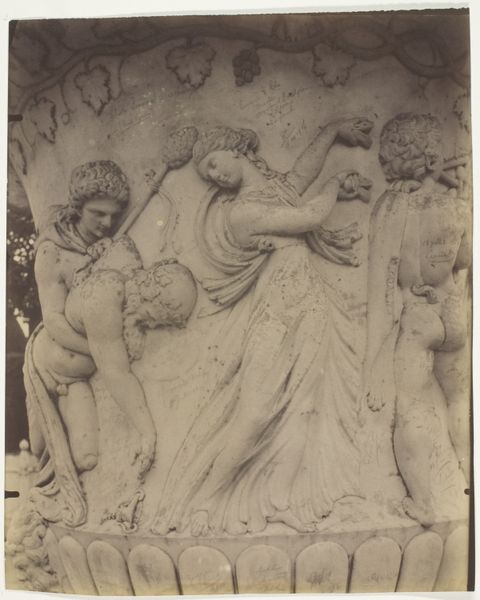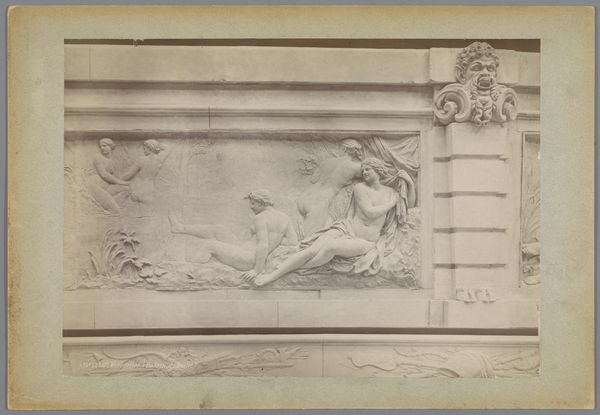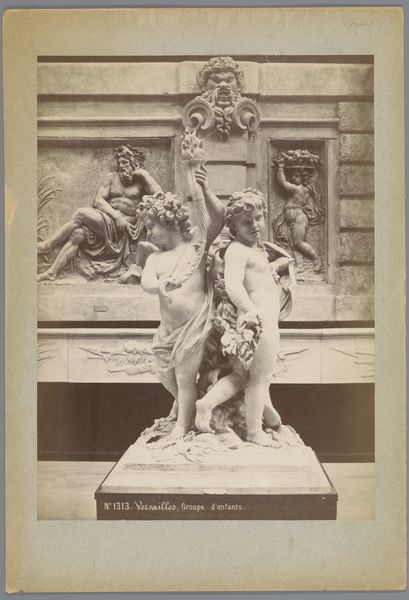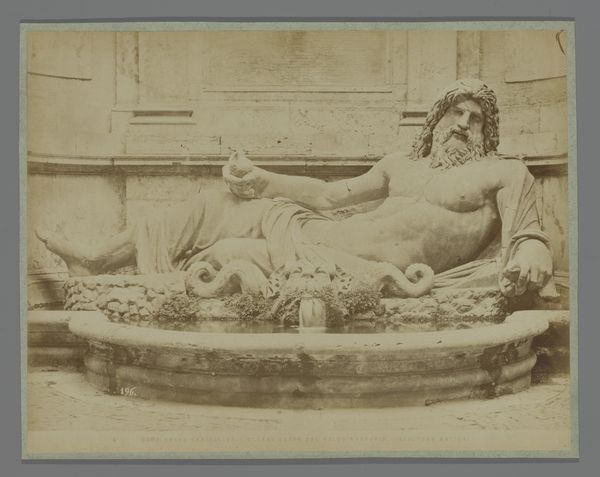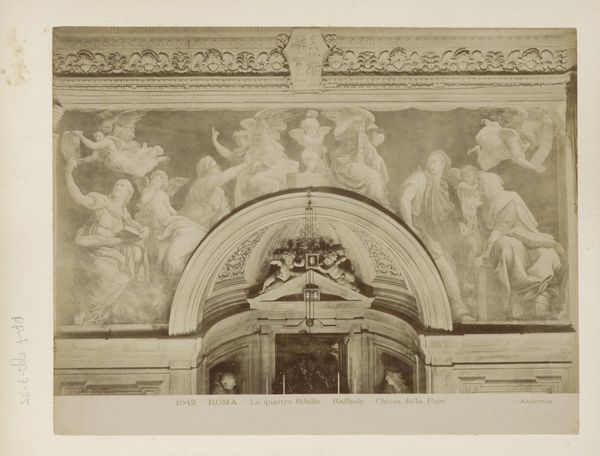
Twee beelden van vrouwelijke engelen aan weerszijden van een medaillon, gesitueerd boven een deurpartij. c. 1878 - 1881
0:00
0:00
bronze, photography, sculpture, marble
#
portrait
#
sculpture
#
classical-realism
#
bronze
#
figuration
#
photography
#
sculpture
#
history-painting
#
academic-art
#
marble
#
nude
#
statue
Dimensions: height 250 mm, width 373 mm, height 620 mm, width 438 mm
Copyright: Rijks Museum: Open Domain
Curator: What immediately strikes me is the bilateral symmetry—the contrasting but balanced figures framing the central medallion. Editor: This is a photograph by Louis-Emile Durandelle, circa 1878-1881, titled “Twee beelden van vrouwelijke engelen aan weerszijden van een medaillon, gesitueerd boven een deurpartij." It's a document of architectural sculpture, isn't it? Part of a larger, perhaps grander, design. I wonder where this door leads. Curator: Function is indeed key here, but let's look at the interplay between line and volume, how Durandelle captures the modulation of light across the forms, that dramatic tension across each form and from left to right... Do you feel it? The wing of the left angel reaching, then her drape against the emptiness of the shield? Editor: Durandelle often worked documenting architectural projects during major periods of construction and renovation in Paris. These sculptures, part of the built environment, spoke to Parisian ideals. Remember the strong current of Classicism in 19th-century public art, used as an ideology. These 'angels' promote an ideal vision of womanhood and perhaps even the nation itself through classical allusions. Curator: I can see your point that their cultural significance in fin-de-siecle Paris would not be dismissed, especially with the emphasis on symmetry. And notice the subtle yet precise textures throughout. Look closely—each crease in the drapery, each feather, and that round, untouched medallion. How is your eye traveling around these lines and mass. Editor: This also underscores the role of photography in the dissemination of artistic and architectural ideas during this period. This photograph offered the image of that particular architectural adornment as an ideal form, making them accessible beyond the immediate locale to influence and shape aesthetic preferences more widely, creating demand for further civic design. It shows the impact that access to new public works and statuary would bring to urban audiences. Curator: Yes, this allows Durandelle's eye and medium to transcend the boundaries to highlight a unique visual grammar and syntax for academic expression in his day. In a new twist! This image is neither painting nor marble in front of you. Interesting times indeed. Editor: A powerful photograph that brings new dimension to our thoughts on history and art! Curator: Absolutely. A fine encounter, really.
Comments
No comments
Be the first to comment and join the conversation on the ultimate creative platform.
